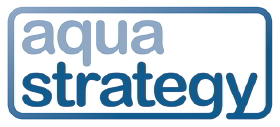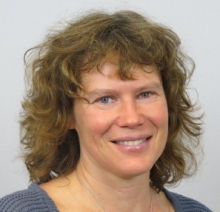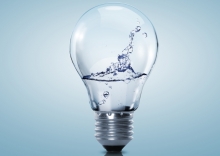Issue:
Details of the SmartWater4Europe project, which is receiving European Union funding for full-scale demonstration of innovative smart water technologies at four sites around Europe.
The overall aim of the SmartWater4Europe project is to provide demonstration sites for innovative Sensing, Information and Communication Technology (SICT) for a selection of Smart Water Network applications: leak detection, water quality management, energy optimisation, and interaction with customers.
These themes were selected on the basis that they have a high potential for innovation, they can make a major contribution to the objectives of water utilities, they offer a substantial potential for creating business opportunities, and they can contribute to resource efficiency.
The subsidy of some Euro 6 million was secured on basis that, with a savings potential of an estimated €10 billion worldwide annually, smart water management offers an enormous market potential to industries and SMEs providing smart water solutions.
The project has four stated objectives: to integrate and demonstrate 12 innovative solutions; to demonstrate for integrated solutions; to establish and guard integration and standardization aspects; and to establish business cases, deployment potential and market uptake routes.
The Vitens demonstration site
One of the test sites in the project is being provided by Dutch water utility Vitens, which is leading the SmartWater4Europe project. The company’s ‘Innovation Playground’ is a part of its service area where it has deployed sensors at a high density as part of a wider effort to find out just what can be achieved.
Applications being tested cover all four of the project’s areas, using multiple sensors and modelling to detect and track water quality anomalies, using flow and pressure sensors in leakage management, combining district metered areas, pressure and other sensors and modelling to optimise energy use, and using social media to help both detect and communicate incidents in the network.
Testing across six district metered areas in the city of Leeuwarden has included use of 15 conductivity and temperature sensors throughout the distribution network, as well as 45 Optiqua EventLab sensors, five S:CAN sensors, two Intellitect sensors, and one sensor provided by Mycometer, all for water quality, plus five sensors from Syrinix for water hammer and pipe burst detection. Other partners include asset management company Quasset and Dutch research centre KWR.
Thames Water’s trial site
The UK’s Thames Water, which is in the early stages of rolling out smart water metering across its network serving some 3.3 million people, is providing a trial site in Reading, to the west of London. The trial site is a network serving around 89,000 properties, with 870km of distribution mains and 172km of trunk mains.
Applications being tested include combining the use of smart meters and a self-learning algorithim to improve leakage reduction, using pressure sensors combined with modelling and self-learning algorithms to optimise energy use, and using web and mobile applications to influence customer behaviour.
Technology deployed in the network includes the Trunkminder and Burstminder systems of Syrinix, Incertameter district metering, and smart meters. Partners also include Intellitect Water, which offers real-time water quality monitoring, the University of Sheffield, and digital company Solvd.
Smart water application by Acciona Agua
Acciona Agua is providing a trial site in the Spanish city of Burgos, where it has signed a contract with utility Aguas de Burgos to set up a management system to provide real-time water quality monitoring and control.
Applications being tested include using sensors to detect water quality anomalies in the chlorinated network, using smart meters to detect leakage at the household level, and deploying a command and control system of systems for leak detection and quality control.
Dubbed SWING – Smart Water Innovation Nework in the city of BurGos – the 56km of distribution network will see trial work in three district metered areas, with deployment of five EventLab sensors from Optiqua and a nano:station from S:CAN. Other partners include IT technology company Arson and open solutions company Homeria.
The SunRise smart campus, Lille
The fourth site is being provided by France’s Lille University of Science and Technology, which is undertaking the SunRise smart city demonstration project at its campus. The university campus hosts some 22,000 people, and there are more than 70 smart meters deployed across the site’s 140 buildings.
Applications being tested including using sensors and a command and control system of systems for water quality anomaly detection, use of automatic meter reading and use of flow and pressure sensors with a command and control system of systems for leak detection, and use of intelligent distributed controllers for energy optimisation.
Other partners on the SunRise component of the project include smart technology institute CEA LIST, CITC – the Innovative Centre for Contactless Technologies, S:CAN, Intellitect Water, computer image company Stereograph, Optiqua, and the W-Smart association, with smart technology integration company Calm Water also listed on the site.
Five major hurdles to smart water management
The SmartWater4Europe project identifies five major hurdles to smart water management:
* A lack of integrated and open solutions. The technology available is fragmented, covering technology fields such as sensors, communications, modelling and control, and offering partial solutions. There is a lack of user-friendly, integrated and open solutions.
* Difficulty complying with all user requirements. Solutions have to be integrated in existing water distribution management systems. These differ strongly in terms of the issues they address and their levels of automation, meaning it is difficult to achieve solutions that meet all user requirements.
* A lack of validated business cases for solutions. Many technologies have not been applied in integrated, full-scale solutions, meaning real life business cases have not yet been elaborated. Technology validation at demonstration scale is essential for further application of solutions.
* A lack of business intelligence awareness. Water utilities have been dominated by traditional operations focused on long term investments and continuity, with separate departments doing separate jobs. Data analysis and algorithmic calculations on all data of all departments are not carried out.
* A lack of political and regulatory support. The policies and measures of governmental and regulatory bodies do not actively support the application of smart solutions for water supply management.
See related article: European support for smarter water utilities - a destiny with data
Keywords:
- Europe, smart water utilities, water supply, smart network monitoring






